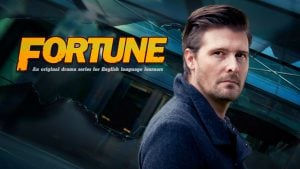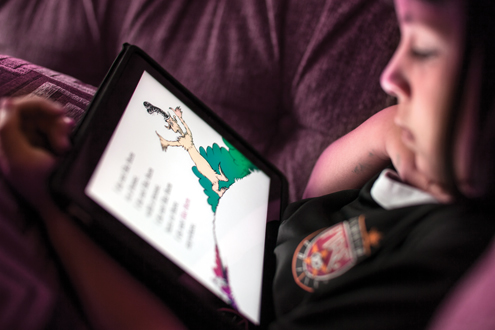Language Magazine asks developers how technological applications can assist in the teaching of diverse student groups
“We’ve seen firsthand how integrating technology into the curriculum can help drive student engagement and lead to improved academic performance. Adobe supports national programs like Globaloria as well as Adobe Youth Voices, the global signature program of the Adobe Foundation. Both bring students from diverse backgrounds together to collaborate on creative, purposeful projects and learn digital media skills in the process. We’ve seen thousands of innovative projects, from a game focused on nutrition and obesity issues to a stop motion animation movie on child soldiers. The projects draw students in and give them the opportunity to express themselves and master digital skills that help prepare them for higher education and the workforce.”
— Jon Perera, Adobe
“Differentiation of instruction and being able to capture data on student progress. Technology is valuable to identify: which students are struggling, see the specific skills where they are having difficulty, offer differentiated instruction, monitor, adjust and comment!”
— Debbie Hodin, EPS/School Specialty
“Education technology solutions offered by ePals and other companies have played a major role in closing the achievement gap and promoting equity in learning for students globally. When students can safely connect with peers in classrooms worldwide and work on projects collaboratively, it promotes the kind of cultural understanding and authentic language learning that can only come from communication on a personal level. Our teacher-users tell us kids in advanced, at-risk, English Language Learner and other categories are more engaged than ever and are developing the empathy and broader perspectives that Fortune 500 companies say are key to success in the 21 century workplace.”
— Will Jarred / Susan McLester, ePals
“Advancements in technology are allowing educators to focus on the specific needs of individual students like never before. Using a complex set of algorithms, we can now determine why a specific child is behind in an incredibly granular way and what the teacher can do next to help her. This allows students to spend time on the things they need to get better at, not on the things they don’t, and allows teachers to differentiate instruction in a much more meaningful way. Products like i-Ready Diagnostic & Assessment can not only determine discreet levels of detail about a child’s particular needs, but also automatically generate reports that share how to help each child make progress on minute sub-skills with everyone (teacher, principal, superintendent) in real time, which helps determine class, school, and district-level strengths and weaknesses, and allows administrators to make better decisions on where to spend time and resources on a larger scale.”
— Curriculum Associates
“A teacher may have a class that has students that rely heavily on visual learning while another student learns best through auditory learning. The only way a teacher can reach this diverse group is to embrace technology and be open to its possibilities.
Our solutions have been specifically designed with diverse learning in mind.
Splashtop for eno supports whole group learning for visual learners. It is an interactive app that turns a tablet such as an iPad into an interactive whiteboard and lets the teacher or student control the interactive whiteboard content. This makes the classroom a more versatile place for learning.
Regardless of what technology teachers choose, it is key that these tools release them from the front of the classroom and allows them to work side by side with their students and reach each of them individually. Educators need to be creative in their choice of technology so that the end result is reaching a diverse group of learners with less time and money.”
— Polyvision
“Hard-working, dedicated teachers who have spent hundreds of hours on YouTube or Google hunting for reliable materials to complement their lessons will search no more. Pearson’s new Online Learning Exchange will provide access to quality content and approved educator-created materials in one easy-to-find place, saving our teachers precious time and energy. OLE is especially relevant during these tight budgetary times. Schools and districts that can’t afford new, complete instructional programs can capitalize on OLE’s low-cost offerings to fully realize the power of technology in their classrooms and enhance student learning.”
— Lynda Cloud, Pearson
“Technology can help educators reach students at all levels and styles of learning. The key is how it is used. Does the application at hand make it easy for teachers to scale work to lesser or greater complexity? Does it provide support for the visual learner as well as conventional readers and writers?”
— Mona Westhaver, Inspiration Software, Inc.
“Technology is a great asset in the classroom. At LEGO Education, resources combine digital and physical technology, which allow students to manipulate, experiment, take risks, design and redesign. As they work they engage all of their senses; they feel, think, touch, see, and move things … sharing ideas with others as they work and exercising creative problem solving skills. For example, LEGO MINDSTORMS for Education has been the biggest success to date. The system is a cutting edge technology platform that is extremely versatile for both students and educators.”
— Stephan Turnipseed, LEGO
“At SMART, we believe that a technology-enabled classroom in the hands of a teacher well-trained on that technology can be an ideal approach to differentiated learning. For example, a teacher can use an interactive whiteboard to introduce a new concept to the whole class. Then, using an interactive response system such as SMART Response, the teacher can quickly tell if the students understand the concept. If some students need more time on the concept, the class can be placed in smaller groups to explore the subject – perhaps using interactive displays to learn collaboratively or personal devices like iPads to explore related digital content individually. Essentially, the technology makes it easier for students to learn at their own pace, with the teacher as their guide, and for teachers to get insight into each student’s learning so she can pace or differentiate instruction accordingly.”
— Anju-Visen Singh, SMART Technologies
“As to how applications of technology can assist educators in the teaching of diverse student groups, there are a number of answers to that, and here are a few. One is that technology can help provide more personalized learning. One way is through prescriptive assessments, such as our Test Packs, that provide an individualized learning plan based on assessment results. Through the use of a range of media, technology can also help to provide differentiated learning that effectively addresses multiple learning modalities and styles. One more example of how technology helps educators teach diverse student groups is in its ability to provide anytime, anywhere learning for students whose schedules or other factors make learning in a traditional environment problematic.”
— Plato

 Taiwan’s Ministry of Education has announced Mandarin-on-the-Go, a new language-learning program for those wanting to learn Mandarin. Chinese language centers and universities are working with the Ministry of Education to promote study tours where students going to Taiwan can learn Mandarin through interactive study abroad programs. The language and travel packages aim to teach the language in a more hands-on approach in the hopes that the interactive element will help students absorb more of the language.
Taiwan’s Ministry of Education has announced Mandarin-on-the-Go, a new language-learning program for those wanting to learn Mandarin. Chinese language centers and universities are working with the Ministry of Education to promote study tours where students going to Taiwan can learn Mandarin through interactive study abroad programs. The language and travel packages aim to teach the language in a more hands-on approach in the hopes that the interactive element will help students absorb more of the language.


 Two filmmakers from New Zealand have recently completed a new drama for worldwide English Language Learners (ELL’s) that aims to both entertain and teach. The series, titled Fortune, was funded by online crowdsourcing website, Kickstarter, and is estimated to be released this September.
Two filmmakers from New Zealand have recently completed a new drama for worldwide English Language Learners (ELL’s) that aims to both entertain and teach. The series, titled Fortune, was funded by online crowdsourcing website, Kickstarter, and is estimated to be released this September. John le Carré is not the only proponent of learning German. Harald Braun and Kurt Gamerschlag share the benefits of learning the language of Goethe in its homeland.
John le Carré is not the only proponent of learning German. Harald Braun and Kurt Gamerschlag share the benefits of learning the language of Goethe in its homeland. Nearly 400 Japanese students of varying ages took the country’s first national Vietnamese language exam last month.
Nearly 400 Japanese students of varying ages took the country’s first national Vietnamese language exam last month. Creative Director of Language Magazine, Leanna Robinson, is currently in Cuzco, Peru to take Spanish classes at a school, Academia Latinoamerica. She will be documenting her travels along the way, and as you watch the vlog you can follow along with her, and watch her Spanish improve! For students interested in studying abroad, watching her vlog may be insightful on what to expect when visiting another country.
Creative Director of Language Magazine, Leanna Robinson, is currently in Cuzco, Peru to take Spanish classes at a school, Academia Latinoamerica. She will be documenting her travels along the way, and as you watch the vlog you can follow along with her, and watch her Spanish improve! For students interested in studying abroad, watching her vlog may be insightful on what to expect when visiting another country. IIE announced steep declines in U.S. intensive English enrollments during a presentation at the recent NAFSA conference in Los Angeles. In the 2016 calendar year, 108,433 international students studied in U.S. intensive English programs (IEPs) for a total of 1,530,817 student weeks, data from Open Doors show. The number of IEP students fell 19% in 2016, and student weeks fell by 23% from the prior year.
IIE announced steep declines in U.S. intensive English enrollments during a presentation at the recent NAFSA conference in Los Angeles. In the 2016 calendar year, 108,433 international students studied in U.S. intensive English programs (IEPs) for a total of 1,530,817 student weeks, data from Open Doors show. The number of IEP students fell 19% in 2016, and student weeks fell by 23% from the prior year. The National Museum of Chinese Writing in Anyang, in the province of Henan, is offering 100,000 yuan (about $15,000) to anyone who can definitively translate a mysterious ancient Chinese character.
The National Museum of Chinese Writing in Anyang, in the province of Henan, is offering 100,000 yuan (about $15,000) to anyone who can definitively translate a mysterious ancient Chinese character. AIM (Accelerative Integrated Methodology) is a compete language-teaching system that uses the following strategies:
AIM (Accelerative Integrated Methodology) is a compete language-teaching system that uses the following strategies:

